Gilbert White’s International Influences
Did Gilbert White Travel?
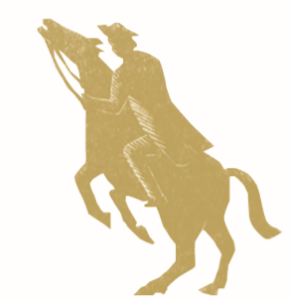
Gilbert White never travelled internationally, unlike some of his contemporaries at Oxford, his family could not have afforded to send Gilbert on a Grand Tour visiting the great cities of Europe. White travelled frequently between Selborne, Oxford, London and East Sussex. The 1740s (when Gilbert was in his twenties) was the period in which Gilbert travelled the most. He spent time in Devon in the south west, which he described at length to his friend John Mulso: ‘We receive them [White’s letters] & think we are Travelling with you for five Minutes, & then look up & find Ourselves in the same tedious Scene.’ In 1745 White spent some months in Ely in Cambridgeshire and Essex, the longest period he would ever spend away from Selborne or Oxford. He spent time at Todenham in Gloucestershire, but only went as far north as Rutland, to visit his sister and brother-in-law. White accepted the living of Moreton Pinkney in Northamptonshire in 1757, but only on the proviso that he would not have to travel there and could hire a curate as a deputy. White loved to see new places, and was always fascinated by other people’s accounts of the far corners of the country and beyond, so why did he travel so little? The reason was severe travel sickness; Gilbert hated travelling long distances and was frequently unwell when he did. The effects of travelling got worse as Gilbert got older, and his excursions got fewer. Instead he lived through the travels of others, quizzing those who did travel, on what they saw, and the natural world around them.
John White
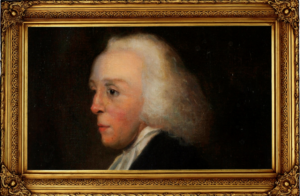
Gilbert White’s brother John (1727-1776) became chaplain to the garrison in Gibraltar in 1756. John was also interested in natural history and in the late 1760s Gilbert began to quiz his brother on a topic that was occupying his mind back in Selborne; migration. John was able to confirm sightings of British-dwelling birds passing through the skies on their way to and from Africa. John would also send Gilbert specimens from Gibraltar, which would often not survive the journey. As John’s interest in natural history increased, he started to write a Natural History of Gibraltar , with lots of advice and tips from his elder brother in Selborne.
‘As many of my readers may possibly never have heard of this strange and unusual insect, I shall here transcribe a passage from a natural history of Gibraltar, written by the Reverend John White, late vicar of Blackburn in Lancashire, but not yet published: “In the year 1770 a vine which grew on the east side of my house, and which had produced the finest crops of grapes for years past, was suddenly overspread on all the woody branches with large lumps of a white fibrous substance resembling spiders’ webs, or rather raw cotton. It was of a very clammy quality, sticking fast to everything that touched it, and capable of being spun into long threads. At first I suspected it to be the product of spiders, but could find none. Nothing was to be seen connected with it but many brown oval husky shells, which by no means looked like insects, but rather resembled bits of the dry bark of the vine. The tree had a plentiful crop of grapes set, when this pest appeared upon it; but the fruit was manifestly injured by this foul incumbrance. It remained all the summer, still increasing, and loaded the woody and bearing branches to a vast degree. I often pulled off great quantities by handfuls; but it was so slimy and tenacious that it could by no means be cleared. The grapes never filled to their natural perfection, but turned watery and vapid. Upon perusing the works afterwards of M. de Reaumur, I found this matter perfectly described and accounted for. Those husky shells, which I had observed, were no other than the female coccus, from whose sides this cotton-like substance exudes, and serves as a covering and security for their eggs.”’
Linnaeus

‘Linnaeus ranges plants geographically; palms inhabit the tropics, grasses the temperate zones, and mosses and lichens the polar circles; no doubt animals may be classed in the same manner with propriety.’ Gilbert White September 1772.
Carl Linnaeus (1707-1778) was a Swedish botanist, zoologist, and physician who formalised binomial nomenclature, the modern system of naming organisms. He is known as the ‘father of modern taxonomy’. All 18th century naturalists, including White, were influenced by Linnaeus; in fact White references him in The Natural History of Selborne 32 times. White was not in direct written contact with Linnaeus but discussed many topics with him through his brother John, who was in contact with the great naturalist.
‘When I came to town I found a long letter from Linnaeus to my Brother John lying in Fleet-street, occasioned by an epistle and some phials of insects sent by the latter to the former. The old arch-naturalist writes with spirit still; and is very open and communicative, acknowledging that several of the Insects were new to him. He languishes to see a pratincola, being conscious that it belongs not to the genus of hirundo.’ Gilbert White March 1772.
Scopoli

Giovanni Scopoli (1723 –1788) was an Austrian physician and naturalist. During his life Scopoli travelled around Europe, where he worked in the fields of chemistry and natural history, and published several works during his lifetime. Scopoli corresponded with Carl Linnaeus, and the two naturalists seem to have shown a great amount of interest in each other’s work. White references Scopoli 15 times in The Natural History of Selborne.
‘Scopoli’s new work (which I have just procured) has its merits in ascertaining many of the birds of the Tirol and Carniola. Monographers, come from whence they may, have, I think, fair presence to challenge some regard and approbation from the lovers of natural history; for, as no man can alone investigate all the works of nature, these partial writers may, each in their department, be more accurate in their discoveries, and freer from errors, than more general writers; and so by degrees may pave the way to an universal correct natural history. Not that Scopoli is so circumstantial and attentive to the life and conversation of his birds as I could wish: he advances some false facts; as when he says of the hirundo urbica that ‘pullos extra nidum non nutrit.’ This assertion I know to be wrong from repeated observations this summer, for house-martins do feed their young flying, though it must be acknowledged not so commonly as the house-swallow; and the feat is done in so quick a manner as not to be perceptible to indifferent observers. He also advances some (I was going to say) improbable facts; as when he says of the woodcock that, ‘pullos rostra portat fugiens ab hoste.’ But candour forbids me to say absolutely that any fact is false, because I have never been witness to such a fact. I have only to remark that the long unwieldy bill of the woodcock is perhaps the worst adapted of any among the winged creation for such a feat of natural affection.’ Gilbert White September 1770.
Banks

‘Yesterday I had a letter from town, which mentions the safe return of Mr. Banks, and adds that he looked as well as ever he did in his life. So agreeable an event calls for my warmest congratulations. For if we rejoice at the arrival of a friend who has been absent but a few months perhaps in a neighbouring kingdom; how shall we express ourselves when we see one restored as it were from the other world, having undergone the astonishing hazards and dangers that must attend the circumnavigation of the world itself ! ! !’ Gilbert White July 1771.
Sir Joseph Banks (1743 – 1820) was an English naturalist, botanist, and patron of the natural sciences. He held the position of President of the Royal Society for over 41 years. Banks made his name on the 1766 natural-history expedition to Newfoundland and Labrador. He took part in Captain James Cook’s first great voyage (1768–1771), visiting Brazil, Tahiti, New Zealand, Australia, returning to immediate fame. He is credited with bringing 30,000 plant specimens home with him; amongst them, he discovered 1,400. Banks is credited with introducing the eucalyptus, acacia, and the genus named after him, Banksia, to the Western world. Around 80 species of plants bear his name. Gilbert White was in written contact with Banks, and hoped that they might meet in person here in Selborne. White followed Banks’ travels closely and celebrated his safe return. Banks and White had many mutual friends.
In a letter White quotes a huge section from a mutual friend’s letter to his brother in law Samuel Barker; this friend, William Sheffield, had visited Banks’ home.
‘My next Scene of Entertainment was in new Burlington Street at Mr. Banks’s. Indeed ‘twas an invitation from this gentleman that carried me to town. His house is a perfect museum, every room contains an inestimable treasure. I passed almost a whole day here in the utmost astonishment, could scarce credit my senses, had I not been an eyewitness of this immense magazine of curiosities, I could not have thought it possible for him to have made a twentieth part of the collection.’ – William Sheffield.
Solander
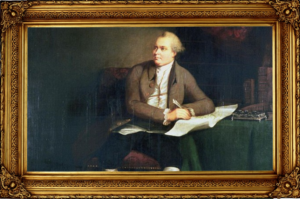
Dr Daniel Solander (1733 – 1782) was a Swedish naturalist. Solander began cataloguing the natural history collections of the British Museum, and was elected a Fellow of the Royal Society. In 1768, Solander gained leave of absence from the British Museum and embarked on Captain James Cook’s first voyage to the Pacific Ocean aboard the Endeavour , with Joseph Banks. He, along with Banks, is one of the botanists that Botanist Bay (which later became Botany Bay) was named after. Solander worked with Banks to record Australian plants; these collections later formed the basis of Banks’ Florilegium . Solander also wrote a manuscript ‘Primitiae Florae Novae Zelandiae ’ describing all the species collected from New Zealand during the six months the 1768 expedition spent there. Solander’s return to Britain with Cook and Banks made him the first Swede to circle the globe.
Gilbert White does not seem to have been in direct contact with Solander, but they had many mutual friends. Gilbert’s lifelong friend John Mulso writes in 1768:
‘Even Mr. Banks (notwithstanding he was so soon to leave the kingdom and undertake his immense voyage) afforded me some hours of his conversation at his new house, where I met Dr. Solander.’
Brisson
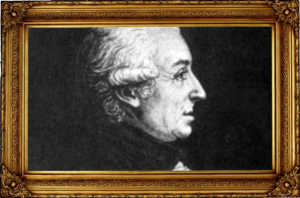
Mathurin Brisson (1723–1806) was a French zoologist and natural philosopher. Brisson published works including Le Règne animal (1756) and Ornithologie (1760). For a period of time Brisson was an instructor of physical sciences and natural history to the French Royal Family. He was chair of physics at the College of Navarre, and from 1759 was a member of the Academy of Sciences. White references Brisson in The Natural History of Selborne , and clearly read his works.
‘The sand-martin, or bank-martin, is by much the least of any of the British hirundines; and, as far as we have ever seen, the smallest known hirundo; though Brisson asserts that there is one much smaller, and that is the hirundo esculenta.’ Gilbert White February 1774.
Migration
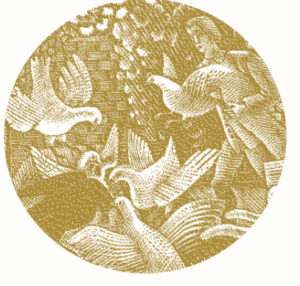
Since ancient times people have tried to understand why species of birds could only be found at certain times of the year; Aristotle, who was one of the first to record his ideas on migration thought that some species found in the summer months might morph into other species found in the winter, such as the redstart morphing into the robin. By the eighteenth century many natural scientists were beginning to understand migration better, but many still believed in the theory that birds hibernated away from human eyes in the mud underneath ponds and lakes.
Gilbert White was especially interested in this question; in fact his first official nature recording made on the 2nd November 1758 was on this very subject: ‘Saw a very unusual sight; a large flock of House-Martens playing about between our fields, and the Hanger. I never saw any of the Swallow-kind later than the old 10 of October. The Hanger being quite naked of leaves made the sight the more extraordinary.’ This shows that, although the records don’t exist, White had been noting the dates certain species disappeared from view over a number of years.
White’s official stance on migration is often debated, and his own opinion was complicated. He could not quite dismiss the ideas of those who did not believe in migration and some of his own observations suggested that some birds could not migrate, for example, how could a young bird so recently hatched undertake such a journey? Daines Barrington, one of White’s correspondents in The Natural History of Selborne believed that birds did not migrate. One of his arguments was why would a bird on arriving in southern Spain, finding a good climate, food and nesting supplies, endanger themselves to go any further? However Gilbert could also see clear evidence for migration. His connections and correspondents around the world, plus the international naturalists whose works White read, wrote confirming the passage of birds over Europe. He could see that some birds had fattened up ready for a long voyage, and, most importantly, if they were hibernating locally they would have been found. The journey that these birds made both impressed and distressed White, a man who longed to see the world, but had never travelled further than the Midlands.
‘As to the short-winged soft-billed birds, which come trooping in such numbers in the spring, I am at a loss even what to suspect about them. I watched them narrowly this year, and saw them abound till about Michaelmas, when they appeared no longer. Subsist they cannot openly among us, and yet elude the eyes of the inquisitive: and, as to their hiding, no man pretends to have found any of them in a torpid state in the winter. But with regard to their migration, what difficulties attend that supposition! that such feeble bad fliers (who the summer long never flit but from hedge to hedge) should be able to traverse vast seas and continents in order to enjoy milder seasons amidst the regions of Africa!’ Gilbert White 1767
